Trinitaria
Trinitaria
The genus Bougainvillea, popularly known as veranera, trinitaria, bougainvillea, buganvilia or bugambilia, is a genus of the family Nyctaginaceae, with 18 accepted species of the 35 described.It is native to the humid tropical forests of South America, mainly those located in areas of Brazil, Peru, Paraguay and northern Argentina and widely cultivated in tropical and subtropical regions.
Trinitaria
El género Bougainvillea, conocido popularmente como veranera, trinitaria, buganvilla, buganvilia o bugambilia. es un género de la familia Nyctaginaceae, con 18 especies aceptadas de las 35 descritas. Es nativo de los bosques tropicales húmedos de América del Sur, principalmente de los situados en áreas de Brasil, Perú Paraguay y norte de Argentina. y ampliamente cultivado en regiones tropicales y subtropicales
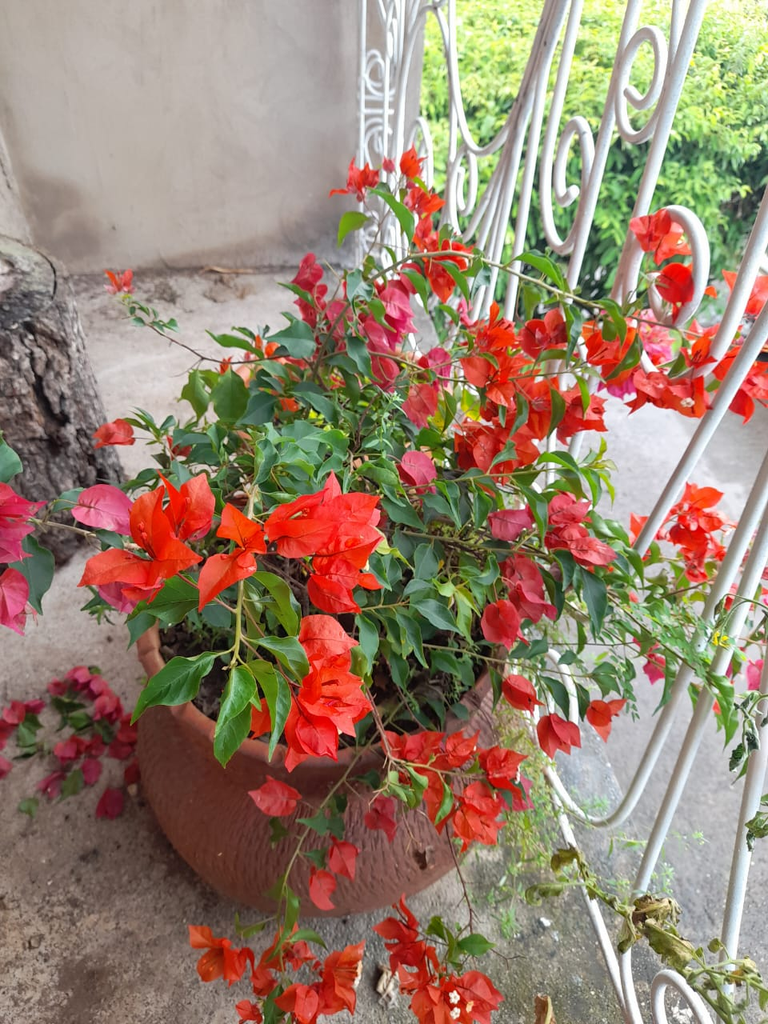
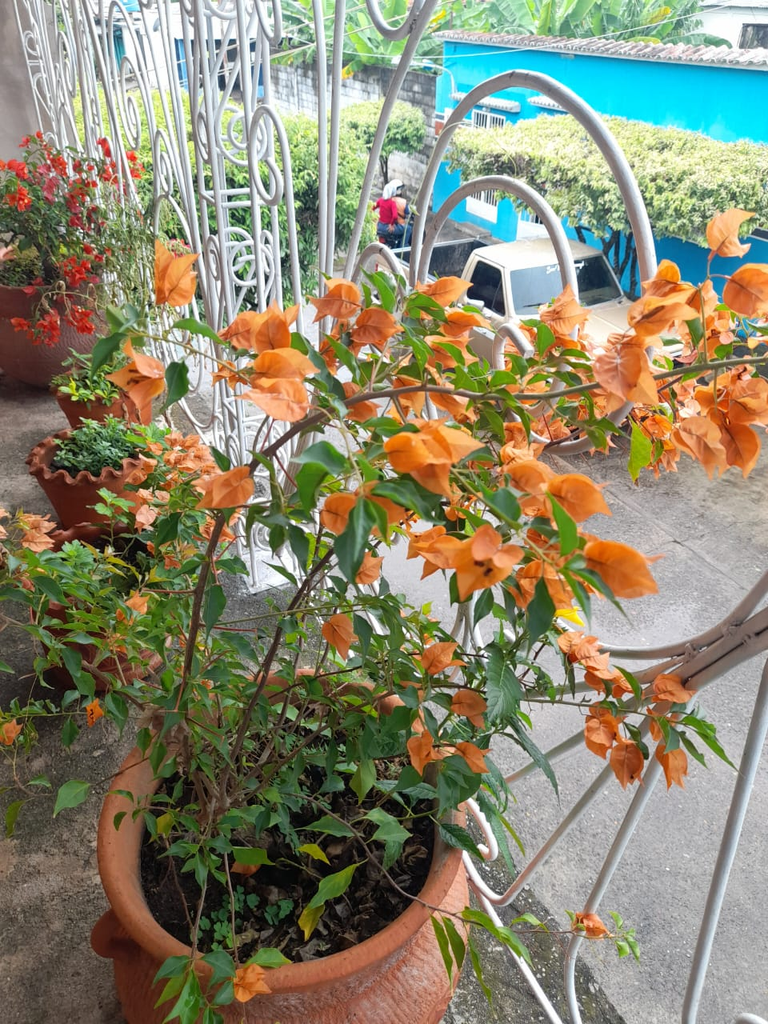
They are shrubs or small trees, some evergreen climbers in the incredibly rainy areas throughout the year, or deciduous in the dry season, from 1 to 12 m high. They cling to other plants using their sharp barbs that have the tip covered with a black waxy substance. The leaves are alternate, simple and oval-acuminate, 4-12 cm long and 2-6 cm wide. The flowers, hermaphrodite, are axillary, conspicuous, tubular, with 5-6 short lobes, usually white, arranged in groups of 3, each one inserted in a persistent bract of papyraceous aspect and usually brightly colored white, yellow, pink, magenta, purple, red, orange, green or brown. The number of stamens varies from 5 to 10; with short filaments welded at the base. The ovary is fusiform, glabrous or pubescent, with short lateral style. The fruit is a narrow, fusiform or cylindrical pentamerous achene.
Son arbustos o árboles pequeños, algunos trepadores perennes en las zonas increíblemente lluviosas durante todo el año, o bien caducifolios en las de estación seca; de entre 1 hasta 12 m de altura. Se sujetan en otras plantas usando sus afiladas púas que tienen la punta cubierta de una sustancia cerosa negra. Las hojas son alternas, simples y de forma ovalado-acuminada de 4-12 cm de largo y 2-6 cm de ancho. Las flores, hermafroditas, son axilares, conspicuas, tubulares, con 5-6 lóbulos cortos, generalmente blancas, organizadas en grupos de 3, cada una insertada en una bráctea persistente de aspecto papiráceo y habitualmente vivamente coloreada de blanco, amarillo, rosado, magenta, morado, rojo, anaranjado, verde o café. El número de estambres varía de 5 a 10; con filamentos cortos y soldados en la base. El ovario es fusiforme, glabro o pubescente, con estilo lateral corto. El fruto es un aquenio pentámero estrecho, fusiforme o cilíndrico
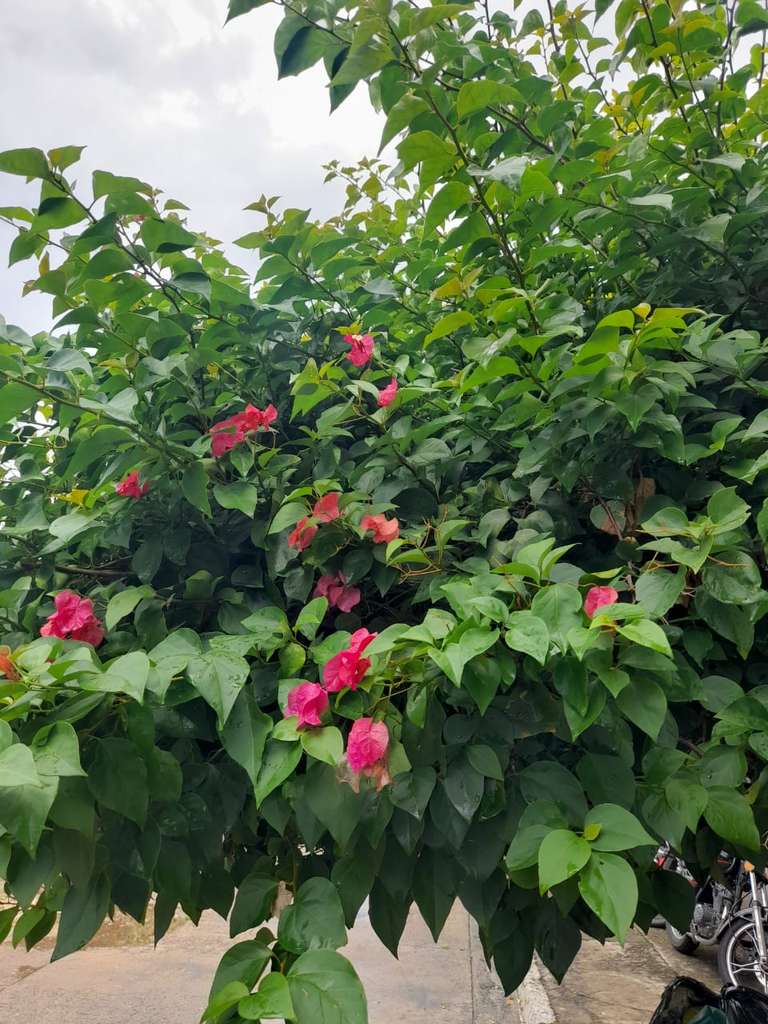
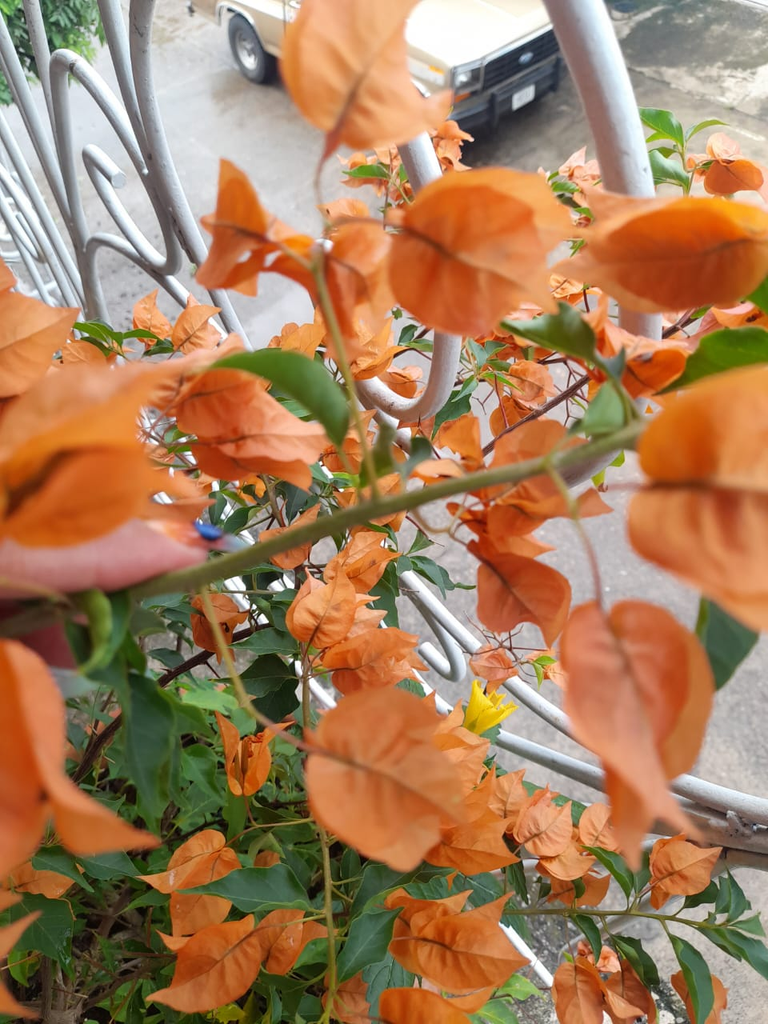
This plant receives a wide traditional medicinal use in the central and southern states of Mexico, mainly in cases of respiratory infections such as cough, asthma, bronchitis and flu. For its treatment the flowers or bracts are used, as well as its preparation which is administered orally.
Esta planta recibe un amplio uso medicinal tradicional en los estados del centro y sur del territorio mexicano, principalmente en casos de infecciones respiratorias como tos, asma, bronquitis y gripe. Para su tratamiento son empleadas las flores o brácteas, así como su preparación la cual se administra en forma oral
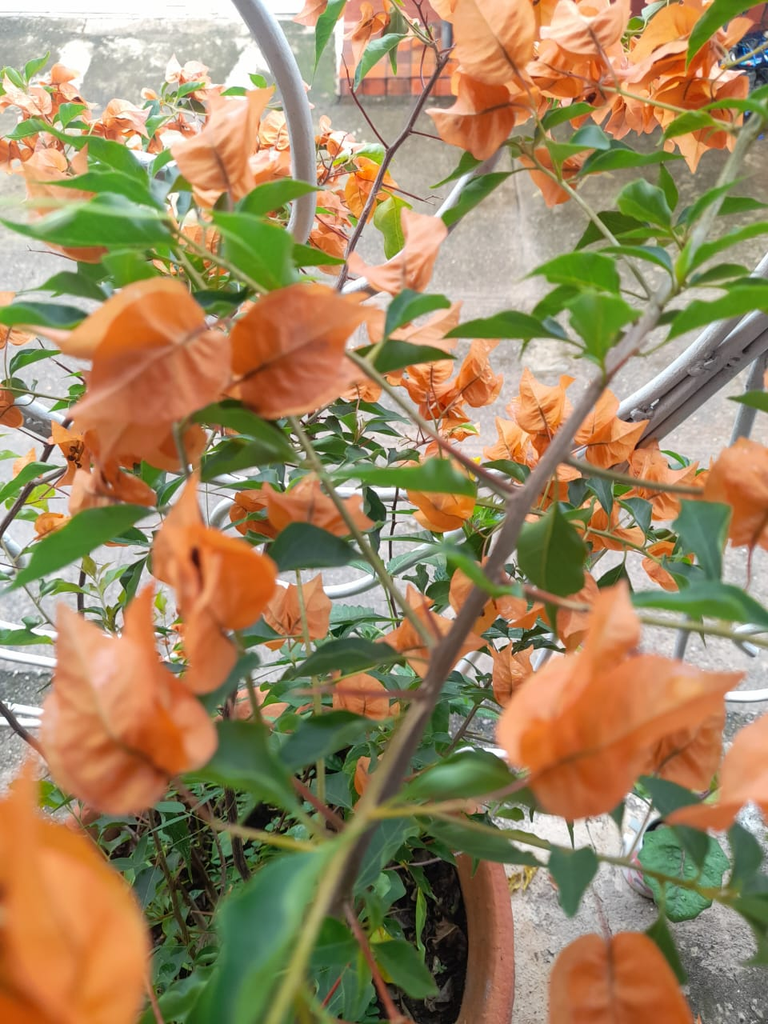
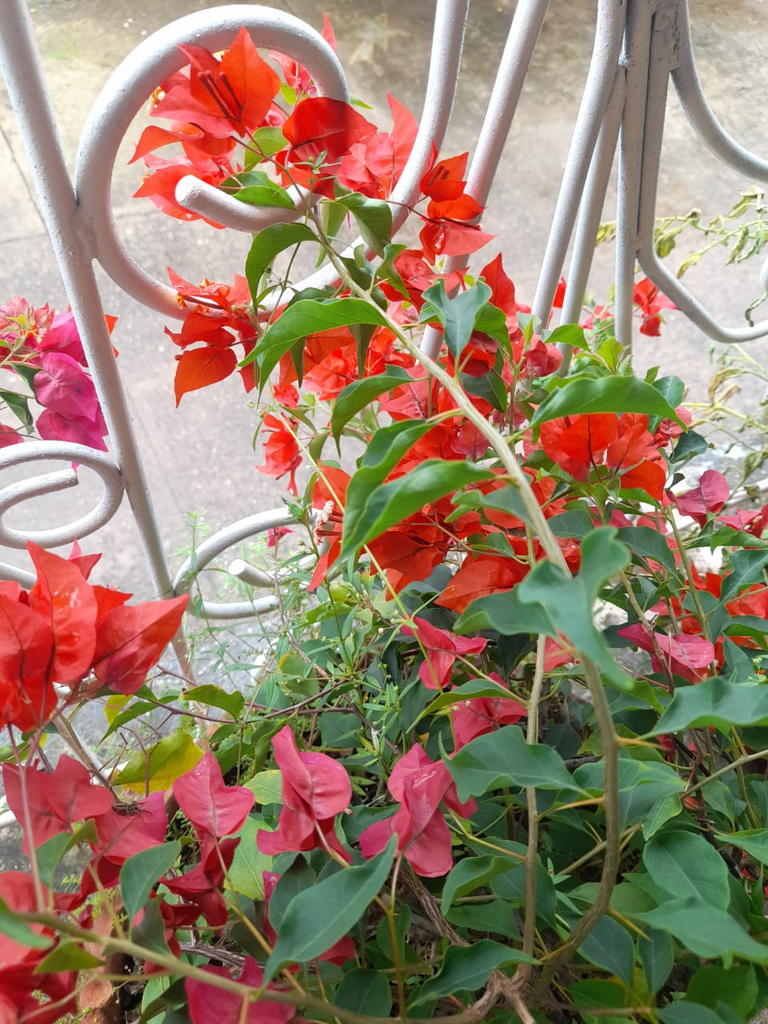
Bougainvillea: generic name given by Philibert Commerson (1727-1773) in honor of Louis Antoine de Bougainville (1729-1811), the French sailor and explorer who introduced the plant in Europe from Brazil, and whose botanist accompanied him in his expedition around the world from 1766 to 1769. Its publication was the work of Antoine Laurent de Jussieu in his Genera Plantarum (Jussieu), 91, in 1789.
Bougainvillea: nombre genérico otorgado por Philibert Commerson (1727-1773) en honor de Louis Antoine de Bougainville (1729-1811), el marino y explorador francés que introdujo la planta en Europa desde Brasil, y de quien era el botánico que le acompañó en su expedición alrededor del mundo de 1766 a 1769. Su publicación fue obra de Antoine Laurent de Jussieu en su Genera Plantarum (Jussieu), 91, en 1789.La especie tipo es: Bougainvillea spectabilis Willd
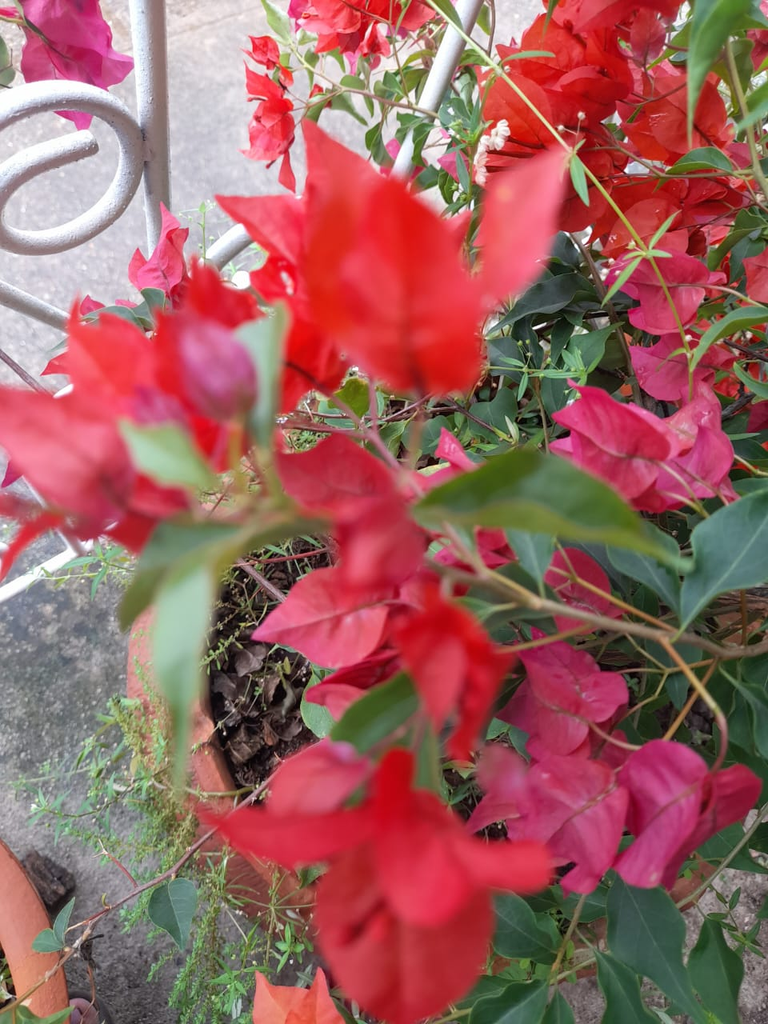
Congratulations @abejitaamaya! You have completed the following achievement on the Hive blockchain And have been rewarded with New badge(s)
Your next target is to reach 50 posts.
You can view your badges on your board and compare yourself to others in the Ranking
If you no longer want to receive notifications, reply to this comment with the word
STOPCheck out our last posts:
Source of potential text plagiarism
Hello.
Plagiarism is the copying & pasting of others' work without giving credit to the original author or artist.
We would appreciate it if you could avoid plagiarism of content (full or partial texts, videos, photography, art, etc.).
Thank you.
Guide: Why and How People Abuse and Plagiarise
If you believe this comment is in error, please contact us in #appeals in Discord.
I love trinitarias, especially the many colors this species has.